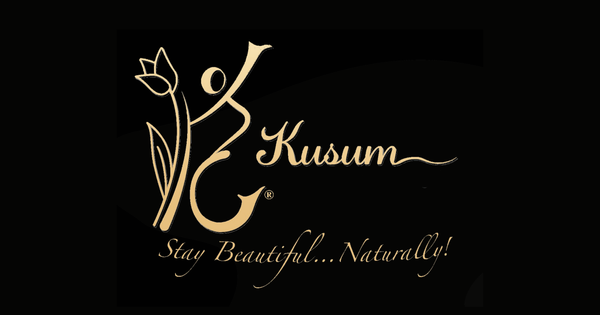
The Best Untold Story of Shelf Life: Part 1.
Share
It is usually a sensational experience to stroll through the beauty products section of a supermarket. One can see well-stocked shelves full of eye-popping colors and containers of all sizes and shapes. The products are made in bulk and stored in a warehouse to ensure the supply meets the demand. This waiting period is called shelf life. Product preservation ensures the products maintain their intended form and effectiveness while awaiting a buyer.
A simple explanation of shelf life is the amount of time a product remains usable in a sealed (unopened) form. Virtually every product has some shelf life. Beauty products are no exception.
The shelf life depends mainly on its ingredients, container design, storage conditions, and use. Advances in manufacturing and storage, chemistry, engineering, and our ability to synthesize resistant structures have improved the shelf lives of most products.
Beauty and cosmetic products can have a shelf life of three years or more. In general, products made with synthetic chemicals and a higher amount and number of preservatives would have a longer shelf life. If you are reading this, we need not discuss such products and the impact of harsh chemicals and preservatives on the skin and the environment!
What is the shelf life of organic beauty products? Many people ask. Is a product with longer shelf life better? Do some people wonder why the shelf life of beauty products with a higher amount of natural and organic ingredients is shorter?
Let's delve into the basics.
Organic means produce grown without chemically formulated fertilizers, growth stimulators, antimicrobials, or similar compounds. Organic produce is grown on soil that is unexposed to prohibited materials for at least three years.
Well, how does being organic or natural change shelf life? Not much. If a product is made with organic or biological substances and contains synthetic stabilizers and strong preservatives, it can have longer shelf life while preserving the "organic" or "natural" label.
A simple example would be apples treated with a resistant coat vs. apples treated without any such treatment. The apples treated with synthetic antimicrobial and coated with wax or similar material will resist forces of nature and stay fresh for a more extended period. However, apples treated without any such treatment would easily get spoiled once plucked.
With this understanding, let's explore further. What is the ideal shelf life of a beauty product?
Oils, being fatty acids, are naturally resistant to spoilage and microbial growth and typically last two to three years. Once water or water-containing ingredients are added (typically in creams and lotions), the shelf life reduces drastically. Preservatives are generally required for water and water-containing products to minimize microbial growth.
Alcohol is the most common preservative used in beauty products. Alcohol is readily available, cost-effective, and has broad-spectrum antimicrobial activity. Alcohol is the most common cause of skin irritation from the use of beauty products as well.
Salt, Citric acid, and Potassium Sorbate are food-grade preservatives used for centuries to preserve water-containing products. Newer, bio-based preservatives have revolutionized our ability to protect beauty products without adding harsh chemicals.
What happens after a beauty product is opened?
Microbial contamination occurs once a product is exposed to air or fingers or applicators get into it. Also, the oxidation process starts, and the effectiveness of ingredients starts to change. Using a product within 30 to 45 days of opening generally provides the most intended benefit.
Let's reverse the course. Is a product with one-year shelf life more effective than a product with a three-year shelf life?
It depends upon the ingredients. As we discussed above, if a product is 100% oil, it might remain effective for two to three years.
How can I quickly access the quality of beauty and cosmetic products?
The front label of a product, also known as the principal display panel is the most visible part of a beauty product's packaging. We recommend reading and understanding the ingredient label on the side or back panel regardless of the print on the front label. Some products may have one or two ingredients derived from nature, thus claiming it to be natural and the rest of the ingredients being harsh chemicals and strong preservatives.
Another commonly seen labeling practice is to mention an attractive element on the front panel (such as "made with real almond oil") where the advertised ingredient is relatively tiny. A prospective buyer may easily misunderstand the product as natural and containing a significant amount of advertised ingredients.
While there are regulations to protect the buyer, buyers should do their due diligence and ensure they fully understand what they intend to use, including product ingredients; this is the easiest way to ensure you get the product you intend to purchase.
A simple example would be reading the label of a shower gel. Are you getting natural soap or just a mixture of foaming agents?
Many foaming agents (also known as surfactants) are naturally derived, but too much foam can strip the skin of its friendly oils. Is it made of high-quality oil (such as organic Olive oil) or a mixture of different oils if you are getting natural soap? The ingredient declaration label provides such vital information. Have you felt dry and itchy skin after a shower? Time to read the ingredient label of your favorite shower product!
In summary, the shelf life of a beauty product depends upon its ingredients and type and number of preservatives used, container design, storage conditions, and method of use. Alcohol and other harsh chemical preservatives help achieve a longer shelf life while causing skin irritation, dryness, and itching. Well-known food-grade preservatives such as salt, citric acid, and potassium sorbate and newer bio-based preservatives effectively replace harsh chemical preservatives. Oil products generally have a longer shelf life, even without any preservatives. Reading and understanding a product's ingredients label provides excellent insight into reality.
Reference: https://en.wikipedia.org/wiki/Surfactant
Disclaimer-This website and content, comment, writing, or authors/contributors/writers do not provide or suggest medical, legal, or professional advice, opinion, or service. The information shared on this website is not intended to diagnose, treat, cure, or prevent any disease.
